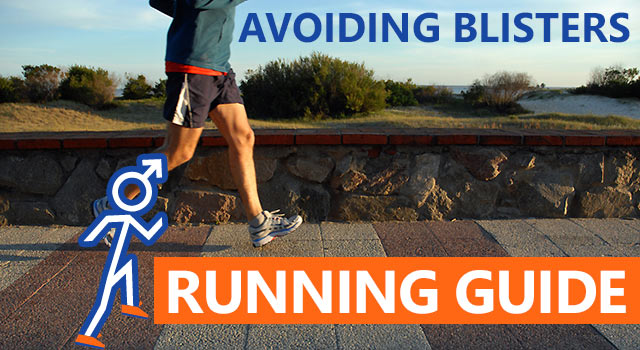
Are you all set for the Pittsburgh Brocathalon this Saturday? Here's how you can prevent blisters:
Don't go to Google and look up blisters, they're gross, plus I happen to think feet are just weird/ gross/ I really freak out if someone touches me with their foot in general, but who knows, maybe you'll think photos of small pockets of fluid are pretty nifty. However you feel about blisters, they're a huge part of being a runner. You can get blisters from just about anything, and don't think that normal blisters are the only kind around in the running game, blood blisters are also a common enemy in the game of fitness.
So how do you go about getting blisters? Well that's easy, it's simple friction between layers of skin in your foot, so it's smart to do what you can to avoid them. Even preparing yourself to run and having the right gear doesn't guarantee that you'll be blister free, but I can tell you this much, no girl is going to want to hear about your blisters.
Blisters can be the bane of any distance runner's world. I'm a huge proponent of spending the extra money on good running socks, they're really not that expensive & the difference between synthetic & cotton is huge. If your running socks are dirty, go ahead & run in a pair of cotton socks, but don't make a habit of this. Running socks are made to stay in place, support your foot and keep your feet cool and dry. Not every race is going to be in perfect conditions, so you may find your feet sweating or covered in water from rain or puddles at water stations. Synthetic socks help because they don't hold the moisture like cotton socks, they stay in place and they allow your feet to have more ventilation. It's incredibly important to get wet socks off of your feet as soon as possible, so I always pack a pair of flip flops to change into after a race if this happens. This is also a case where having actual running shoes is vital because most running shoes are heavily covered in mesh to provide venting as well. I also find it helpful to lubricate my feet for longer runs to keep the sock from sticking to my foot. You can use petroleum jelly or any brand of running lubricant (such as Body Glide) that you might come across.
Having a properly fitted shoe is also key to avoiding blisters. If your shoes are too tight (and I learned this lesson the hard way) you're more prone to blisters anywhere that your skin will rub against the shoe; this includes areas like your ankle, heel and toes, it's pretty amazing the places you can get blisters on your feet actually. Shoes that are too tight can cause blisters on the tips of your toes & because they may be pushing your toes together, you may also develop blisters between your toes. This is also the culprit for blood blisters, which are blisters that form when tissue and blood vessels are damaged without the skin being pierced. If you've never had a blood blister, good for you, they hurt....a lot, and they're awful to look at. Imagine accidentally kicking a bedpost or table, and then the pain not going away. You can get blood blisters anywhere on your foot, but they most often occur under the toenails. If the blood blisters under your toenails are bad enough, you could actually lose your toenails & there are lots of nerve ending under there that you don't want exposed. A lot of runners joke about this happening, but it's a painful process and if your toenail doesn't grow back in straight, you could get a hangnail which will keep you off of your feet even longer.
For the love of Art Rooney, don't ever pop a blister! I realize that sometimes this happens accidentally because the blisters are large, but this is not a good idea. Blisters should only be drained by a medical professional and if you do happen to be unlucky enough to have blisters develop during a race, there is usually a medical tent that you can go to after the race to have these tended to properly. Doctors offices, hospitals and express medical facilities will also take care of blisters for you if they get worse after you've left a race. If the blisters are minor & you still want to run, cover them with a bandage before going; many bandage companies now make blister bandages that provide extra cushioning to protect the blister from bursting. You don't want the blister to burst during a run & then get sweat in a freshly opened wound. A foot infection is going to slow you down a lot more than a blister will, so don't be an idiot (because that's what you'll be if you don't take blisters seriously), take care of yourself. If your blisters are bad, take a day or two off to let them heal, it's tough to run without feet.
So to sum things up, blisters of any kind are bad and gross. The right gear can save you pain, running socks are worth the investment as are good running shoes (I cannot stress that enough). If you happen to get a blister, don't just brush it off, the consequences of not taking care of this injury (yes, this is an injury) properly could keep you out of a race instead of off of the treadmill for a few days. Everyone gets blisters, so it doesn't mean that you're doing anything wrong if this happens to you, but it should alert you that something may not be fitting properly or may need replaced. Until next time, keep your feet on the track & your eyes on the finish line.
Check out the previous articles in this series here:
Intro: Just Starting Out - Picking The Right Shoes


